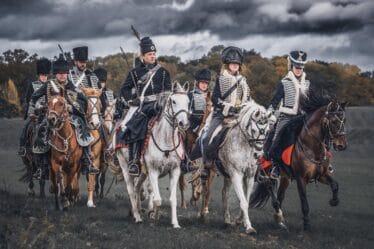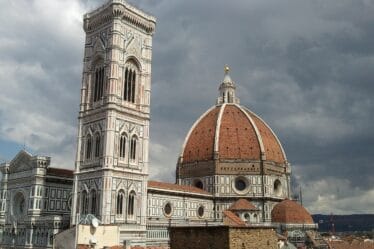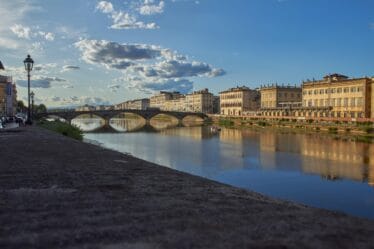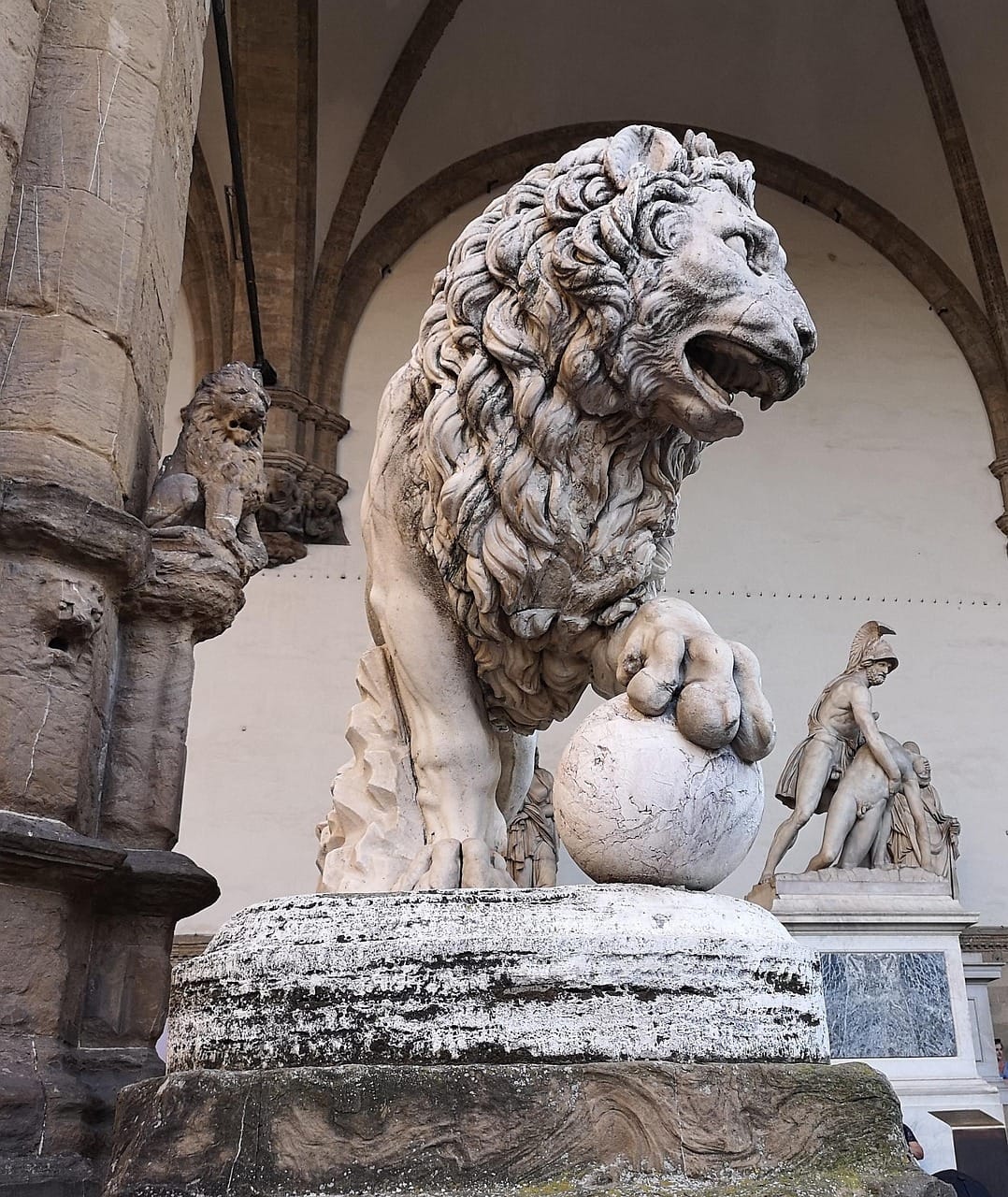
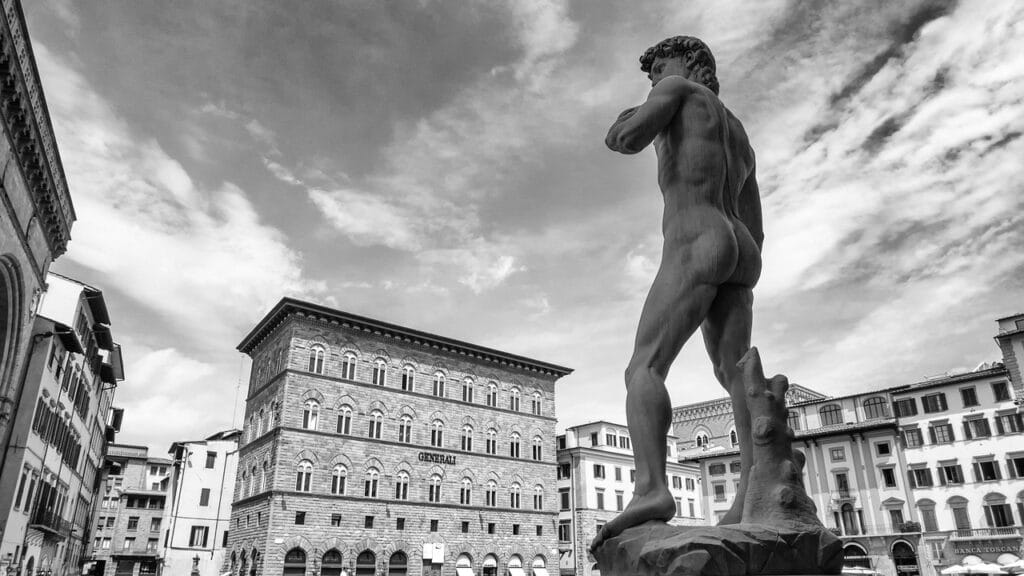
Guardians of Florentine Power is a remarkable story of art, symbolism, and authority set in the heart of Florence. In this article, we explore how two ancient lion statues, moved from Rome in the late 18th century, became powerful symbols of civic strength and vigilance. Through thoughtful design and placement, they transformed the Loggia de’ Lanzi into more than just a gallery—into a monument of urban identity and pride.
A Powerful Arrival in Florence
In 1789, Guardians of Florentine Power came to life when two majestic lion statues were placed at the foot of the Loggia de’ Lanzi. This move was not random. In fact, the sculptures had arrived from Villa Medici in Rome two years earlier.
Florentine architect Giuseppe Del Rosso was chosen to integrate the lions into the space. As a result, the lions were positioned carefully at either side of the Loggia’s staircase, enhancing the architectural harmony of the entire piazza.
Learn more about Piazza della Signoria and its sculptures
Not Just Decoration: Symbols of Authority
These lions were not mere ornaments. On the contrary, they carried deep symbolic weight. Their presence reflected Florence’s tradition of monumental art and, at the same time, projected a clear message of power and vigilance.
Moreover, their positioning aligned with a broader political vision. At the time, the Medici influence was fading, and Florence was entering a phase of uncertainty. As a result, the lions served as silent protectors of order. They reminded both citizens and visitors of a time when strength and stability were firmly rooted in Medici rule.
Explore more about Florentine sculpture and public art
Del Rosso’s Vision and Harmony
Giuseppe Del Rosso, a leading figure in Enlightenment architecture, saw more than just space to fill. He reimagined the Loggia as a living dialogue between past and present. Guardians of Florentine Power was not just a decorative update—it was a political and artistic statement.
Thanks to his classical training, Del Rosso respected the balance between the Roman origins of the lions and the Renaissance elegance of the Loggia. Consequently, the result was a perfect fusion of two cultural epochs, creating a coherent and powerful urban narrative.
An Enduring Presence in the City
Today, these lions are much more than historical statues. They are Guardians of Florentine Power—figures that continue to capture the attention of both scholars and tourists.
Because of their symbolic strength and strategic placement, they remain part of Florence’s broader identity. In a city where every monument tells a story, the lions at the Loggia remind us of art’s role in politics, and of sculpture’s power to shape public meaning.
Conclusion
In conclusion, the lion statues at the Loggia de’ Lanzi are more than just impressive artworks. They are Guardians of Florentine Power, standing firm through centuries of change. Through their symbolism, placement, and historical journey, they continue to embody the strength and elegance that define Florence itself.

